Hongxiang Gao
Graph Convolutional Network with Connectivity Uncertainty for EEG-based Emotion Recognition
Oct 22, 2023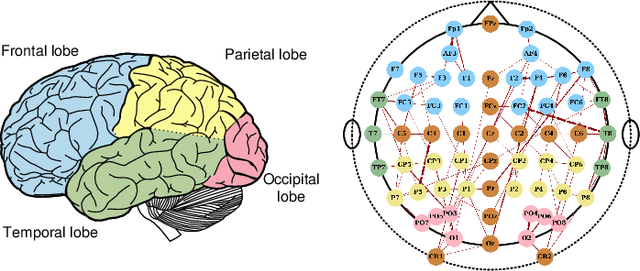
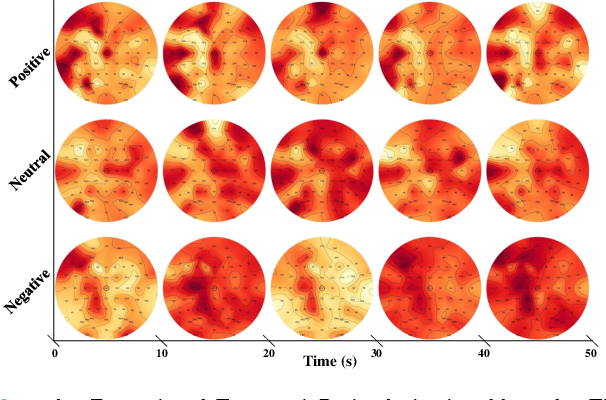
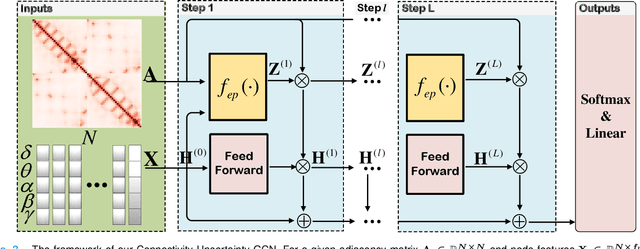

Abstract:Automatic emotion recognition based on multichannel Electroencephalography (EEG) holds great potential in advancing human-computer interaction. However, several significant challenges persist in existing research on algorithmic emotion recognition. These challenges include the need for a robust model to effectively learn discriminative node attributes over long paths, the exploration of ambiguous topological information in EEG channels and effective frequency bands, and the mapping between intrinsic data qualities and provided labels. To address these challenges, this study introduces the distribution-based uncertainty method to represent spatial dependencies and temporal-spectral relativeness in EEG signals based on Graph Convolutional Network (GCN) architecture that adaptively assigns weights to functional aggregate node features, enabling effective long-path capturing while mitigating over-smoothing phenomena. Moreover, the graph mixup technique is employed to enhance latent connected edges and mitigate noisy label issues. Furthermore, we integrate the uncertainty learning method with deep GCN weights in a one-way learning fashion, termed Connectivity Uncertainty GCN (CU-GCN). We evaluate our approach on two widely used datasets, namely SEED and SEEDIV, for emotion recognition tasks. The experimental results demonstrate the superiority of our methodology over previous methods, yielding positive and significant improvements. Ablation studies confirm the substantial contributions of each component to the overall performance.
ECG-CL: A Comprehensive Electrocardiogram Interpretation Method Based on Continual Learning
Apr 10, 2023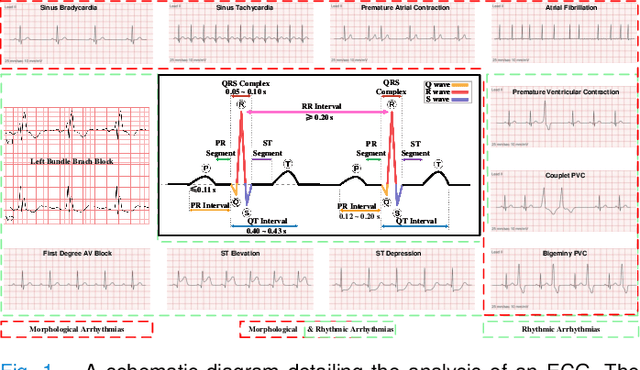
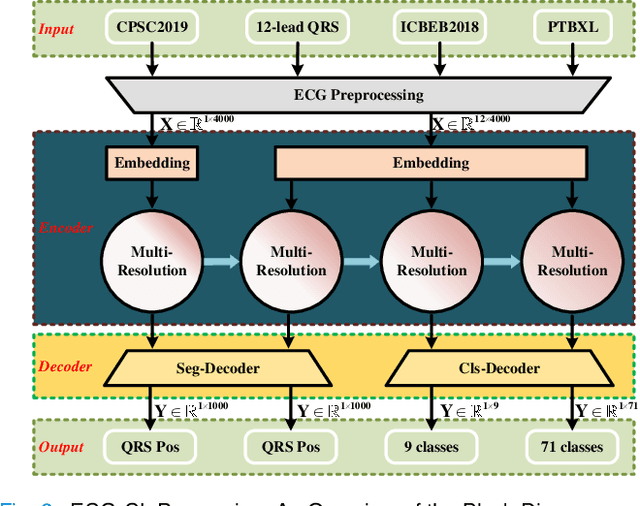
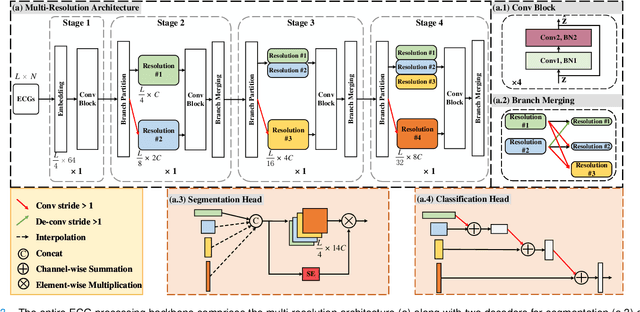
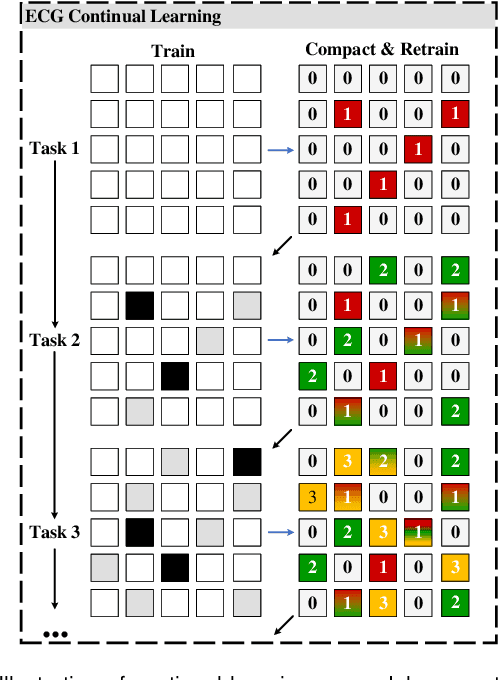
Abstract:Electrocardiogram (ECG) monitoring is one of the most powerful technique of cardiovascular disease (CVD) early identification, and the introduction of intelligent wearable ECG devices has enabled daily monitoring. However, due to the need for professional expertise in the ECGs interpretation, general public access has once again been restricted, prompting the need for the development of advanced diagnostic algorithms. Classic rule-based algorithms are now completely outperformed by deep learning based methods. But the advancement of smart diagnostic algorithms is hampered by issues like small dataset, inconsistent data labeling, inefficient use of local and global ECG information, memory and inference time consuming deployment of multiple models, and lack of information transfer between tasks. We propose a multi-resolution model that can sustain high-resolution low-level semantic information throughout, with the help of the development of low-resolution high-level semantic information, by capitalizing on both local morphological information and global rhythm information. From the perspective of effective data leverage and inter-task knowledge transfer, we develop a parameter isolation based ECG continual learning (ECG-CL) approach. We evaluated our model's performance on four open-access datasets by designing segmentation-to-classification for cross-domain incremental learning, minority-to-majority class for category incremental learning, and small-to-large sample for task incremental learning. Our approach is shown to successfully extract informative morphological and rhythmic features from ECG segmentation, leading to higher quality classification results. From the perspective of intelligent wearable applications, the possibility of a comprehensive ECG interpretation algorithm based on single-lead ECGs is also confirmed.
A Causal Intervention Scheme for Semantic Segmentation of Quasi-periodic Cardiovascular Signals
Sep 19, 2022



Abstract:Precise segmentation is a vital first step to analyze semantic information of cardiac cycle and capture anomaly with cardiovascular signals. However, in the field of deep semantic segmentation, inference is often unilaterally confounded by the individual attribute of data. Towards cardiovascular signals, quasi-periodicity is the essential characteristic to be learned, regarded as the synthesize of the attributes of morphology (Am) and rhythm (Ar). Our key insight is to suppress the over-dependence on Am or Ar while the generation process of deep representations. To address this issue, we establish a structural causal model as the foundation to customize the intervention approaches on Am and Ar, respectively. In this paper, we propose contrastive causal intervention (CCI) to form a novel training paradigm under a frame-level contrastive framework. The intervention can eliminate the implicit statistical bias brought by the single attribute and lead to more objective representations. We conduct comprehensive experiments with the controlled condition for QRS location and heart sound segmentation. The final results indicate that our approach can evidently improve the performance by up to 0.41% for QRS location and 2.73% for heart sound segmentation. The efficiency of the proposed method is generalized to multiple databases and noisy signals.
 Add to Chrome
Add to Chrome Add to Firefox
Add to Firefox Add to Edge
Add to Edge